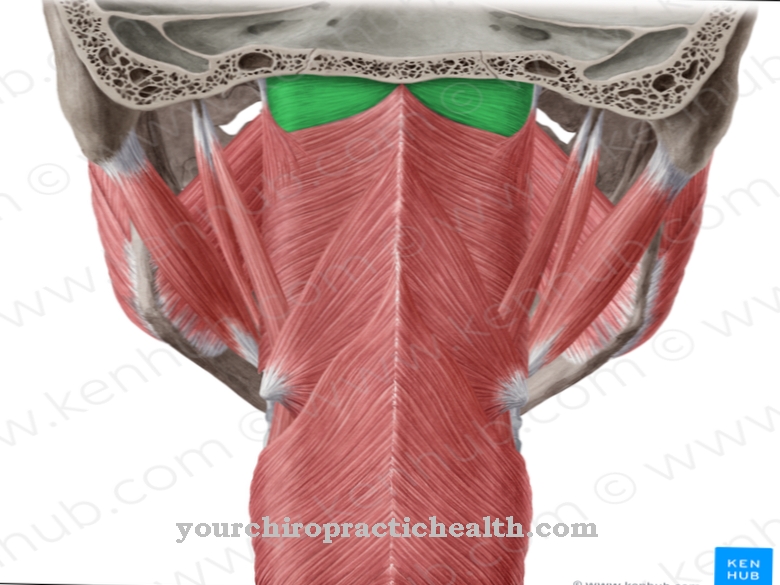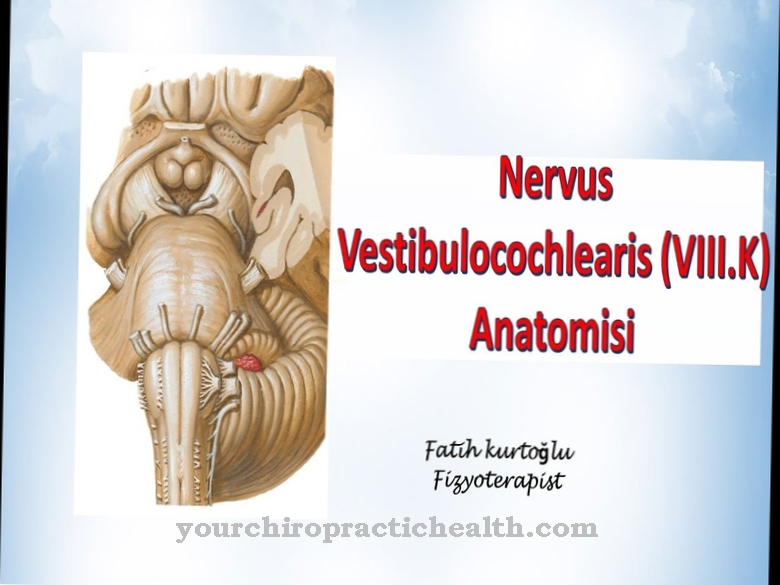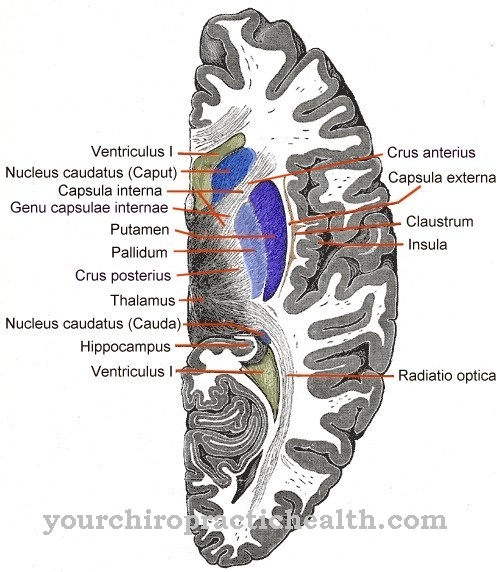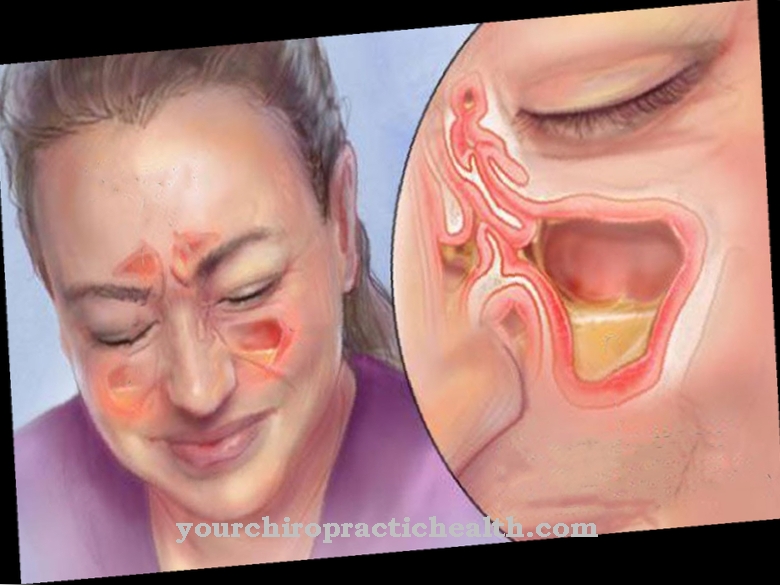Under extracellular matrix (EZM) all endogenous substances are summarized that are outside the cells in the intercellular space. The EZM is of great importance for the strength and shape of tissues and as a carrier for blood and lymph vessels as well as for nerve fibers. The intercellular space is a complex collection of the most varied macromolecules that belong either to the liquid or gel-like basic substance or to the fibers.
What is the Extracellular Matrix?
All endogenous substances that are outside the cells in the intercellular space are part of the extracellular matrix (ECM). The EZM is also called Extracellular matrix or Intercellular substance designated. Basically, in the ECM, substances can be distinguished that either belong to the basic substance or can be assigned to a wide variety of fibers.
Depending on the task and tissue, the composition of the ECM is very different. The substances that make up the group of fibers include a variety of collagen, reticular and elastic fibers, each of which fulfills different tasks and, depending on the type of tissue, forms their part of the ECM in very different compositions. The amorphous basic substance of the ECM fills all remaining spaces as a liquid or as a gel, which result depending on the structure of the intercellular space and the fiber content of the ECM. The composition of the basic substance is also very different depending on the task.
A large part of the ECM is formed from glycosaminoglycans, long-chain polysaccharides which, apart from hyaluronic acid, are usually bound to proteins in the form of proteoglycans. For example, they perform numerous tasks in the assembly, dismantling and remodeling of fabrics. In this context, so-called adhesion proteins should also be mentioned, which, as part of the ECM, make contact with receptors of the cells in complex processes.
Anatomy & structure
The anatomical structure of the EZM is very heterogeneous and depends on the tasks that the EZM has to perform in the corresponding body region. The fiber content of the ECM consists mainly of collagen proteins, 27 of which are known, which each differ in their protein composition and also differ in their physiological and mechanical properties.
Essentially, collagens are characterized by their tear resistance. Collagen fibers with a diameter of 2 to 20 micrometers are made up of many 130 nanometer thick collagen fibrils. Also important are the reticular fibers, which form microscopic nets or lattices to accommodate capillaries, nerve fibers, fat cells and smooth muscle cells. In contrast to the tear-resistant and non-stretchable collagen fibers, elastic fibers, which consist of the protein elastin, have the unique property of reversible stretching.
A large part of the basic substance is made up of glycosaminoglycans - mostly in the form of proteoglycans, glycans bound to proteins, the main function of which is to create the necessary connections between the individual proteins. For example, the cartilage substance of the joints consists of glycosaminoglycans and glycoproteins. In contrast to collagens, the cartilage substance of the joint surfaces is not characterized by tear resistance, but rather by high compressive strength. The hyaluronic acid contained in the ECM has an extremely high water holding capacity and makes a decisive contribution to the water balance of the tissues.
Function & tasks
The extracellular matrix not only performs physical functions with regard to tensile or compressive strength, but also intervenes in metabolic processes. With a wide variety of collagen fibers, the EZM assumes the main responsibility for the shaping of organs and it holds the organs in the intended position in the body. Via other collagens, the EZM ensures the tensile strength of all tendons and ligaments as well as the three-dimensional strength of the bones.
In addition, it ensures the pressure and wear resistance of the surface cartilage on the friction surfaces of the joints. But not only tensile, compressive and shear strength are among the tasks of the EZM, it is also incumbent on it to ensure the necessary elasticity in the tissues so that certain organs can enlarge and reduce their size as required without it irreversible damage. Another important area of activity is the activation of the body's own repair mechanisms through the release of cytokines, which influence the proliferation and differentiation of cells.
The EZM therefore has a supply of cytokines that can be activated when needed - for example to repair injuries. Signal transduction is also one of the tasks of the extracellular matrix. This means the release of so-called secondary messenger substances, the “message” of which reaches the inside of the cell via specialized receptors and activates the cell to behave in a certain way or to take up certain metabolic processes. The determination of the polarity, i.e. the organization and alignment of the cells into a basal and an apical end, is also part of the extracellular matrix's area of responsibility.
You can find your medication here
➔ Medicines against swelling of the lymph nodesDiseases
The almost unmanageable variety of functions and tasks incumbent on the extracellular matrix suggests that disease-related or disease-related malfunctions can occur with mild to severe effects.
As the cause and starting point of many chronic diseases through to malignant and life-threatening processes, disturbances are assigned to the basic regulation, which is organized by the EZM. Many processes in the course of disease that are related to the basic regulation of the ECM, which is related to the release of cytokines, are not yet adequately understood. Often an overload of the basement membranes of the affected organs with proteins is identified as the cause. For example, these processes play an important role in the development and course of dilated cardiomyopathy, which manifests itself in a symptomatic enlargement of the heart with a simultaneous impaired pump function.
In addition to acquired malfunctions of the ECM, genetic functional anomalies of the extracellular matrix are also known, which are usually expressed in an incorrect synthesis of certain collagens. The defective collagen synthesis leads to the well-known clinical pictures in the affected organs, such as the rare glass bone disease (osteogenesis imperfecta). Due to a genetic anomaly, the EZM supplies defective collagen for bone formation. As a result, the bones are extremely brittle and there are mostly deformations of the bones and spine and other symptoms.
























.jpg)



